TABLE OF CONTENTS
Best Sardinian Foods
This hard cooked cheese is made with whole milk from pasture-grazed sheep, and has a particularly salty and slightly piquant flavor. Aged for at least 5 months, Pecorino Romano makes an excellent table cheese, particularly when combined with fresh vegetables and fruit, but after eight months of aging, it is mainly used for grating over classic Roman dishes such as Bucatini all’Amatriciana, Rigatoni alla Carbonara, Spaghetti Cacio e Pepe, and Tripe alla Romana.
The origins of Pecorino Romano can be traced back to the Roman Empire, when cheese processing methods were first described by some of ancient Rome's most important writers on agriculture: Varrone, Columella, Virgilio and Pliny the Elder. In 227 BCE, the production of this renowned cheese spread to the neighboring island of Sardinia, where even today almost 90% of Pecorino Romano is produced, while the remaining 10% comes from Lazio and the Tuscan province of Grosseto.
Produced exclusively on the island of Sardinia, Pecorino Sardo is a semi-cooked, hard cheese made with whole milk from the pasture-grazing Sarda sheep. This breed is indigenous to Sardinia, raised throughout Italy and considered to be among the best domestic breeds for milk production.
Highly adaptable to different terrains, Sarda sheep feed on fragrant Mediterranean shrubs, which gives Pecorino its distinctive aromatic flavor. It is available in two varieties: Pecorino Sardo Dolce (mild), a sweet and more delicate version, and Pecorino Sardo Maturo (mature), a much stronger flavored cheese that's matured for at least 2 months and pleasantly piquant.
Pair with
MAIN INGREDIENTS
Widely known as Sardinian ravioli, culurgiònes are a typical dish of Ogliastra. These delicious handmade dumplings are shaped to resemble an ear of wheat, and they are traditionally filled with potatoes, pecorino cheese, lard, onions, garlic, and mint.
Another common filling includes ricotta, spinach or chard, and saffron. Culurgiònes are typically served doused in a flavorful tomato sauce and sprinkled with freshly grated pecorino.
MAIN INGREDIENTS
Malloreddus alla Campidanese is a popular pasta dish from the Campidano plain. It is made with authentic local ingredients: malloreddus pasta, saffron, fresh sausages seasoned with fennel seeds, peeled tomatoes, and a topping of freshly grated Pecorino cheese.
Like many other dishes of this region, malloreddus alla Campidanese started as a poor man's dish, but due to its fantastic flavor, over time it turned into one of the most renowned Sardinian dishes. Malloreddus alla Campidanese pairs nicely with full-bodied wines - locally produced Carignano del Sulcis is a good choice.
Produced only on the Italian island of Sardinia, where the traditions of sheep farming and cheesemaking can be traced back to 1000 BCE, Fiore Sardo is a hard cheese made from whole sheep’s milk from local breeds. After six months of aging, Fiore Sardo develops its distinctive pungent aroma and a rich, piquant flavor with pronounced notes of caramel sweetness.
The younger Fiore Sardo is most often consumed as a table cheese and pairs well with fruity wines, while matured versions are typically used for grating over a number of traditional dishes such as culurgiones, a type of Sardinian ravioli.
Pair with
Pane guttiau is a traditional flatbread originating from Sardinia. It's very similar to pane carasau, but guttiau is even thinner. The flatbread looks like thin leaves with long cracks, and it was originally made for shepherds who took it with them to the pastures because it keeps very well – if kept dry, it stays edible for a whole year.
The dough is rolled as thinly as possible, and it is then baked until the edges start to rise up. Pane guttiau is often brushed with olive oil and sprinkled with sea salt, then eaten as a snack. It's also commonly served with salami and cheese.
Spaghetti con la bottarga is a popular pasta dish from Sardinia, flavored with bottarga, a renowned, locally-produced cured mullet roe. For this simple, yet very delicious dish, cooked spaghetti are first shortly tossed in garlic-infused olive oil, then flavored with a mixture of pepper, finely chopped parsley, grated bottarga, and a few spoonfuls of pasta water.
Quick and easy to make, spaghetti con la bottarga is a favorite Sardinian primo and the best proof that there is no need to complicate when cooking with high-quality ingredients.
Serve with
These deep-fried Sardinian pastries combine wheat or semolina dough with a slightly savory cheese filling. Sebadas are typically round and come filled with the sweet and aromatic young Pecorino Sardo cheese. Primarily a frugal and rustic dish, especially beloved by shepherds, sebadas were originally a savory dish, but nowadays they represent a classic Sardinian dessert.
They are traditionally served drizzled with honey (preferably of the Sardinian miele amaro variety) and dusted with sugar.
MOST ICONIC Seada
View moreMAIN INGREDIENTS
Roasting is one of the most common meat cooking methods in Sardinia, and su porcheddu, a roasted suckling pig, is a very popular local dish, often prepared for holidays or other special occasions. The pig must be just about 40 days old in order to ensure that the meat is young and tender.
Before roasting, the hair is removed with boiling water and the meat is flavored with olive oil, salt, pepper, and fennel. The most traditional way of roasting the pig involves a fire pit filled with embers. The pig is wrapped in myrtle leaves, then placed in the pit and cooked slowly for a long time.
OTHER VARIATIONS OF Porchetta
Popularly called carta musica, due to its resemblance to an old music sheet parchment, pane carasau is a traditional Sardinian flatbread whose origins have been traced to the Nuragic Age, circa 1900-730 BCE. Because of its long storage life, pane carasau was once a staple food of Sardinian shepherds during their trips to mountain pastures.
This artisan Italian bread is made with durum wheat flour, water, yeast, and salt; it is extremely thin and twice-baked for extra crispness. With quite a unique flavor and a heavy aroma of cereals, barn, and wood-burning ovens, this flatbread is delicious as a cracker and is typically enjoyed as an accompaniment to various snacks, cheeses, appetizers, and soups.
TABLE OF CONTENTS
Best Sardinian Food Producers
AWARDS

World Cheese Awards - Gold
2022
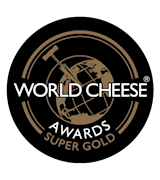
World Cheese Awards - Super Gold
2024

Italian Cheese Awards - Nominee
2022, 2020, 2019, 2018, 2017
BEST Caseificio Debbene Cheeses
AWARDS

Italian Cheese Awards - Nominee
2020, 2019

Italian Cheese Awards - ICA
2020, 2016
BEST Caseificio Monzitta E Fiori Cheeses
BEST La Casa Del Grano Pasta
Caseificio Mandrolisai is a cheese producer located in the central Sardinia region of Italy. They specialize in traditional Sardinian cheeses, utilizing local sheep's milk. The company adheres to practices that emphasize quality and traditional methods.
Their product line includes Pecorino Sardo and other regional varieties.
AWARDS
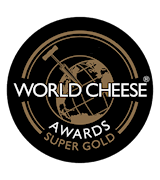
World Cheese Awards - Super Gold
2022

Italian Cheese Awards - Nominee
2023, 2022
BEST Caseificio Mandrolisai Cheeses
AWARDS
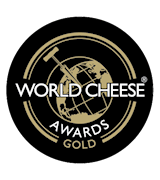
World Cheese Awards - Gold
2024

World Cheese Awards - Super Gold
2024
BEST Caseificio Garau Cheeses
Argiolas is a traditional cheese producer located in Sardinia, Italy. The company focuses primarily on producing high-quality Pecorino cheeses. Argiolas sources its milk from local sheep, ensuring that their products have a unique and authentic regional flavor.
The company's cheese-making techniques combine modern technology with traditional methods.
Caseificio Monzitta & Fiori is a cheese producer based in Ozieri, Sardinia, Italy. The company specializes in traditional Sardinian cheeses, including Pecorino and Ricotta. They use milk sourced from local sheep and cows to create their products. The production adheres to traditional methods to maintain authenticity and quality.
All cheese is crafted with a focus on preserving regional flavors and heritage.
Zanda is a cheese producer based in Sardinia, Italy. They specialize in traditional Sardinian cheeses, using locally sourced sheep's milk. The company is known for its Pecorino Sardo, a staple in Sardinian cuisine. Zanda adheres to traditional cheesemaking methods while also incorporating modern quality controls.
Their cheeses are aged in conditions that enhance their unique flavors and textures.
TABLE OF CONTENTS
Best Sardinian Food Products
AWARDS

World Cheese Awards - Super Gold
2024

Italian Cheese Awards - Nominee
2022, 2020, 2019, 2018, 2017
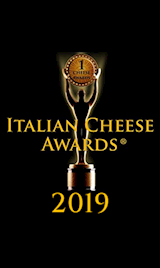
Italian Cheese Awards - ICA
2019
AWARDS

World Cheese Awards - Super Gold
2022
AWARDS
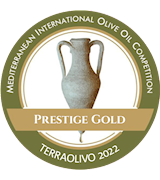
Terraolivo IOOC - Prestige Gold
2022

OLIVINUS - Prestigio Oro
2022
AWARDS

Italian Cheese Awards - Nominee
2023, 2022
San Giuliano Fruttato is a high-quality extra virgin olive oil produced by Domenico Manca S. P. A. This product is known for its robust flavor profile, characterized by a fruity aroma with hints of fresh green olives and a slightly peppery finish.
It is made from carefully selected olives, predominantly from the Sardinia region in Italy, where the company is based. The oil is cold-pressed to preserve its nutritional properties and rich taste, making it an excellent choice for salads, dressings, and finishing dishes.
AWARDS

NYIOOC - Gold
2023

Terraolivo IOOC - Grand Prestige Gold
2021
AWARDS

Italian Cheese Awards - Nominee
2020, 2019
Accademia Olearia Riserva del Produttore DOP Sardegna is an olive oil product crafted by Accademia Olearia srl. This premium olive oil is recognized for its high quality, distinguished by its Protected Designation of Origin (DOP) status, which ensures that it is produced, processed, and prepared in a specific region in Sardinia, according to stringent standards.
The olive oil is extracted from carefully selected olives native to the Sardinian region, celebrated for their exceptional taste and aromatic properties. The "Riserva del Produttore" label signifies that this product is a reserve selection, highlighting its superior quality and the meticulous care taken during its production process.
AWARDS

Terraolivo IOOC - Grand Prestige Gold
2021

EVOOLEUM - Top 100
2023
ACCADEMIA OLEARIA BIO DOP SARDEGNA FRUTTATO VERDE is a high-quality extra virgin olive oil produced by Accademia Olearia srl, an esteemed olive oil producer based in Sardinia, Italy. This product carries the DOP (Denominazione di Origine Protetta) designation, indicating that it is made from olives grown and processed in a specific region, adhering to strict production standards to maintain its authenticity and quality.
The term "Fruttato Verde" refers to its distinctive fruity flavor profile, characterized by notes of green, unripe olives, which often impart a robust and slightly peppery taste. The "BIO" label signifies that this olive oil is certified organic, produced without the use of synthetic pesticides or fertilizers, ensuring a natural and environmentally friendly product.
AWARDS
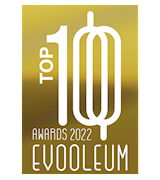
EVOOLEUM - Top 100
2022
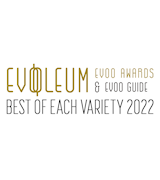
EVOOLEUM - BEST OF EACH VARIETY
2022
AWARDS

Barcelona Beer Challenge - Gold
2024, 2020
AWARDS

World Cheese Awards - Super Gold
2024
TasteAtlas food rankings are based on the ratings of the TasteAtlas audience, with a series of mechanisms that recognize real users and that ignore bot, nationalist or local patriotic ratings, and give additional value to the ratings of users that the system recognizes as knowledgeable. TasteAtlas Rankings should not be seen as the final global conclusion about food. Their purpose is to promote excellent local foods, instill pride in traditional dishes, and arouse curiosity about dishes you haven’t tried.




















































































































